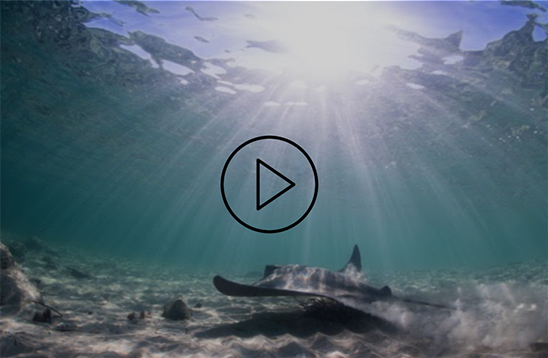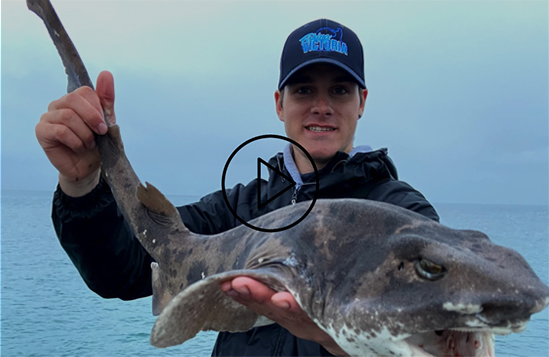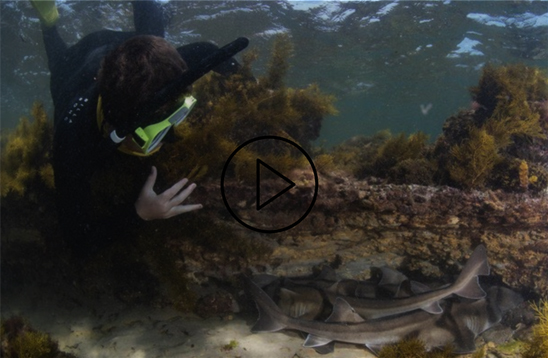How to handle and release sharks above 1 metre
Whether you’re fishing from a boat or the shore, knowing what to do with your catch is paramount – for your own safety and that of your catch. Catching a large shark or ray can be exhilarating but it can also be very dangerous. In this video, recreational fishers talk you through the best practice approach to handling and releasing sharks above 1 metre.
Key takeaways:
- Make sure you are using the appropriate gear including non-stainless circle hooks, heavy line and wire trace, pliers, crimper, de-hooker, gloves, towel or cloth, dispatching tool, bolt cutters, measuring pole, gaff, and rope.
- Minimise fight time but avoid trying to dehook a shark that is still very energetic.
- Be responsible when taking photographs and always prioritise the health of the fish over the desire for photos.
- Always try to release a large shark in the best shape possible to reduce injury and mortality.
- If you’re on a boat:
- Put the anchor on a buoy to reduce fight time.
- Potentially use a noose around the tail to prevent thrashing but avoid dragging the shark backwards through the water by the tail.
- Keep the shark in the water while motoring the boat slowly forward.
- Cut the line/leader as short as possible.
- Do not grab or gaff the shark in the gills.
- Put the anchor on a buoy to reduce fight time.
- If you’re on shore or on a jetty:
- Get the shark back in the water as quickly as possible.
- Do not reel the shark in over rocks or reef, sand is ok.
- Remember, there’s no shame in cutting the line. Just make it as short as possible.
- Get the shark back in the water as quickly as possible.
Watch next
Be a best practice ambassador
Enjoyed these instructional videos? Spread the word and share them with your mates. Let’s lead the way in creating a safer experience for fish and fishers. And if you’re interested in becoming an official Shark Mates ambassador…






